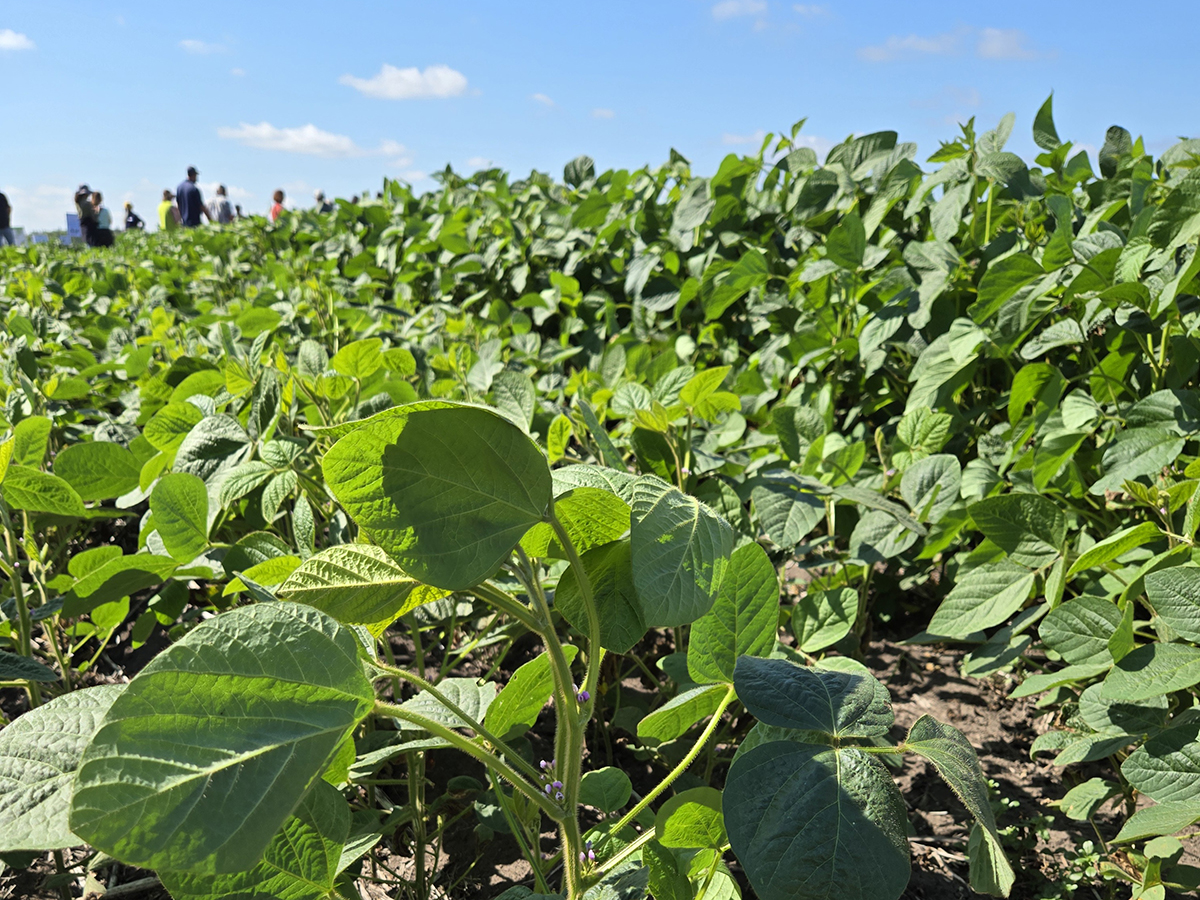SASKATOON – Ben Hudye says his trip across the border with a load of milling durum was worth $8.37 a bushel.
That compares to a potential $5.05 a bushel he would have received for the No. 3 durum at home.
The Norquay, Sask. farmer is an organizer for the group Farmers for Justice and leader of a caravan of trucks that ran the U.S. border crossing at Deloraine, Man. Oct. 27 and a week earlier at Regway, Sask.
Hudye said he ran the border without an export permit because he supports the Farmers for Justice argument that the Canadian Wheat Board has no authority to regulate foreign grain sales. The wheat board now holds a monopoly on Canada’s international wheat and barley sales.
Read Also

Spider mites big soybean problem this season
Spider mite issues have been geographically limited but significant where they occur, said John Gavloski, an entomologist with Manitoba Agriculture.
Farmers can legally sell their grain to the U.S. by buying the grain back from the board and getting an export permit.
As well, Hudye said price was a compelling reason.
Top prices
At an exchange rate of $1.34 Cdn, Hudye’s $8.37 a bushel translated to an American price of about $6.25 per bushel. That’s close to the top of hot American milling durum market because the load had 90 percent dark, hard and vitreous kernels – a key measurement of quality.
He estimated it cost about 50 cents a bushel to haul the grain from Norquay to Berthold, N.D., where it was sold for a farmgate price of $7.87.
Hudye doesn’t count the fines imposed at the border as part of his costs since he doesn’t intend to pay them.
They amount to $400 per truck for a first offence plus $100 a tonne ($2.72 a bushel) for wheat and $40 a tonne (87 cents a bushel) for barley. For subsequent offences, the fine jumps to $2,000 per vehicle.
In Canada, Hudye said the same grain graded No. 3 Canada Western amber durum.
According to the Canadian Wheat Board’s September pool return outlook, the instore export price for No. 3 durum ranged from $216 to $236 per tonne.
Less the average freight, elevation and deductions for Sask-atchewan of $40.46 per tonne, Hudye’s Canadian farmgate price at this point in the crop year is about $186 per tonne, or $5.05 per bushel. Adjusted initial payments for new-crop durum are $165 per tonne.
“People are doing this to enhance their income,” Hudye said. “That (wheat board) system depletes it.”
A more extreme example of higher American prices, according to Hudye, is for a local Norquay farmer and client who has low-test weight feed barley (42-43 pounds) to sell. His dilemma? He has 385,000 bushels (8,380 tonnes) of this barley.
Hudye said the Alberta feed barley market “won’t even look” at barley unless it has a minimum test weight of 48 pounds.
However, Hudye said he’s found a niche market in the U.S. that will buy this barley and give the Norquay farmer a price of $3.90 per bushel at his yard.
An export permit for the barley has been denied by the wheat board, Hudye said.
In contrast, Hudye said the board’s price for this quality of barley is $2 a bushel less than the American bid. For this farmer, Hudye claims that’s a difference of $770,000.
Greg Lore, a cash grain broker with Ag Value Brokers in Calgary, said the Alberta feed market will buy low-test weight barley, usually to blend with better quality grain, at about a $20 per tonne discount to the going cash price.
Last week, feed barley was trading at $152-$154 per tonne f.o.b. Calgary. The lower quality barley would have been worth $2.85 per bushel for the Norquay, Sask. farmer in Calgary.














